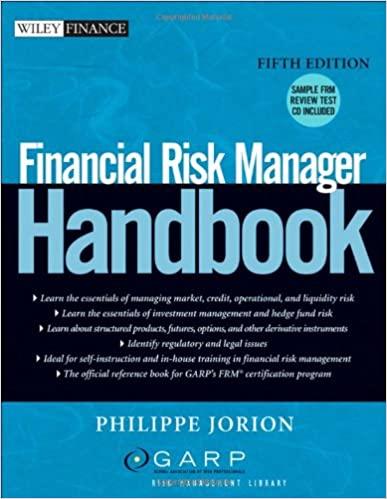Question
Suppose your friend, Pat, approaches you with a plan to get in on the solar panel leasing business. Pat has identified an opportunity to acquire
Suppose your friend, Pat, approaches you with a plan to get in on the solar panel leasing business. Pat has identified an opportunity to acquire panels sufficient to power 25 homes. On average, Pat estimates that your enterprise will incur a cost of $1,000 for each installation. After that, each home installation will operate maintenance free and generate approximately $50 per month of revenue for 10 years.
Assume that due to the rapid rate of technological depreciation, there will be neither demand nor salvage value for these solar panels at lease expiry.
Assume you'll face a 40 percent tax rate. For tax purposes, you'll be able to depreciate the total cost of equipment and installation over 5 years in a straight-line manner.
Your required return can be estimated from Solarplex, a publicly traded pure-play solar panel leasing company with a beta of 2 and a debt-to-equity ratio of 1. You estimate that returns on a balanced market portfolio are 12 percent and the risk-free rate of borrowing is 4 percent.
Suppose, first, that Pat proposes you form an all-equity enterprise to invest in this opportunity. What is the maximum price you should pay for this inventory of panels? Report annual cash flows, even if you decide to use a compact formula for direct calculation. Use the APV/WACC method (recall, they're the same for a firm w/ no debt).
Suppose the seller is asking $50,000 for the total inventory of solar panels. Additionally, assume you can borrow $25,000 at 8 percent in the form of a five-year, interest-only loan, with the total principal retired via a balloon payment due in year 5. Does this investment make sense? Report annual cash flows, even if you decide to use a compact formula for direct calculation. Briefly explain why you are using the computational method chosen. (Hint: you will need to decide to use the APV or WACC formula. It is possible to compute either / both. But be careful -- given the nature of the debt-share-of-value in this project, one of these approaches is much more complicated than the other.)
Step by Step Solution
There are 3 Steps involved in it
Step: 1

Get Instant Access to Expert-Tailored Solutions
See step-by-step solutions with expert insights and AI powered tools for academic success
Step: 2

Step: 3

Ace Your Homework with AI
Get the answers you need in no time with our AI-driven, step-by-step assistance
Get Started


